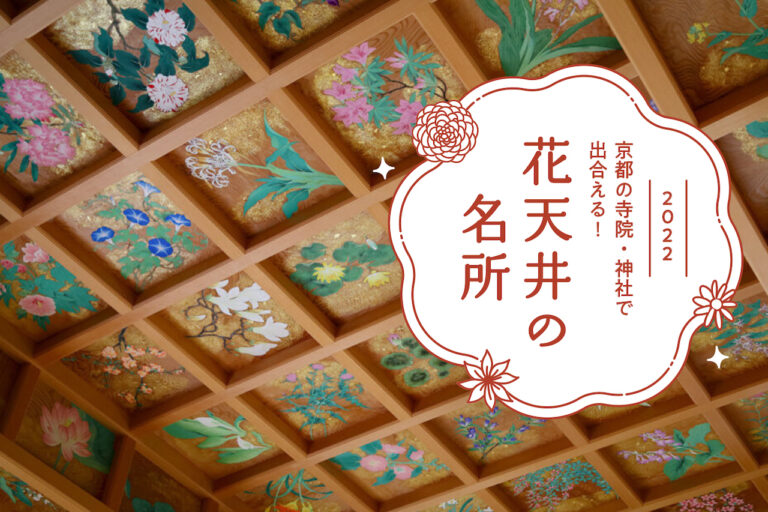
Meet at Temples and Shrines in Kyoto! 10 Places to Visit for Flower Ceilings
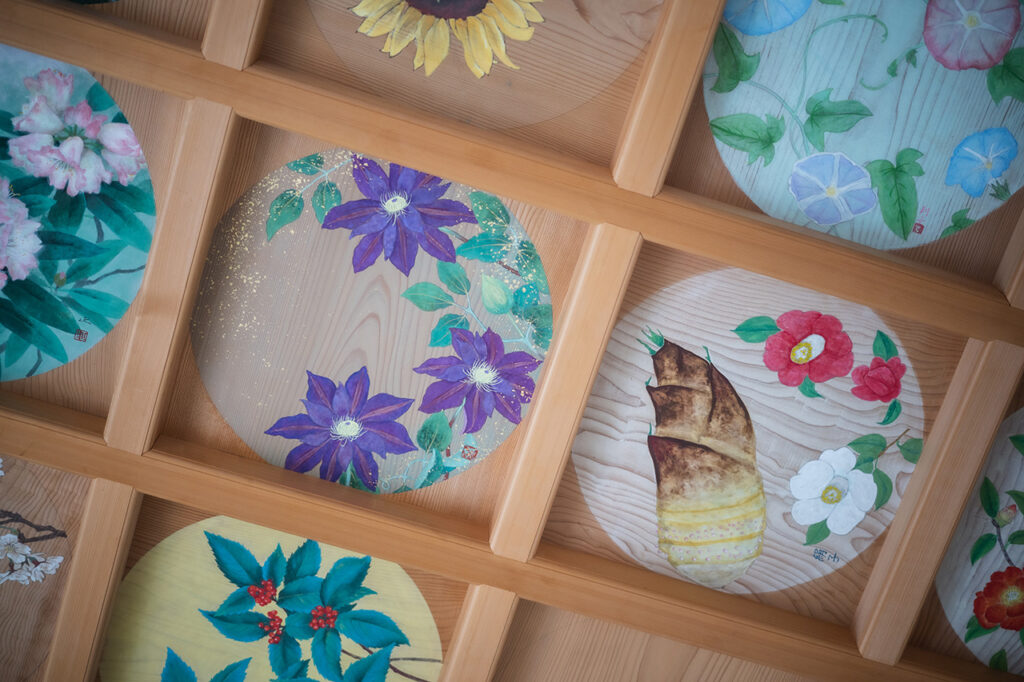

The temple was built in 1200 as a pagoda temple of the Iryo Kyokoji Temple and is also known as Kyoto's wind-bell temple because of the wind-bell festival held there every summer. The 160 ceiling paintings decorating the guest hall were created as a reconstruction of the Edo period ceiling paintings in the inner sanctuary of the main hall.
It was built in Shoji 2 (1200) as the pagoda temple of Iio-kyoji Temple. The principal image of the temple, a standing eleven-faced Kannon Bosatsu (eleven-faced Goddess of Mercy), is a secret statue that is opened only once every 50 years. Every summer, the temple holds a wind-bell festival and is also called the wind-bell temple of Kyoto. The 160 ceiling paintings decorating the guest hall were created as a reconstruction of the Edo period ceiling paintings in the inner sanctuary of the main hall. About 90 Japanese-style painters collaborated to create the ceiling paintings, which are said to be based on the theme of flowers or scenes that evoke a sense of Japan. Using traditional pigments such as iwa-enogu (mineral pigments), the paintings on the cedar panels depict a wide variety of Japanese and Western flowers, including camellias and clematis, the Watarigatsu Bridge in autumn, carp streamers, maiko (apprentice geisha), and blue ocean waves. The works are all in perfect harmony with each other and are overwhelmingly beautiful.
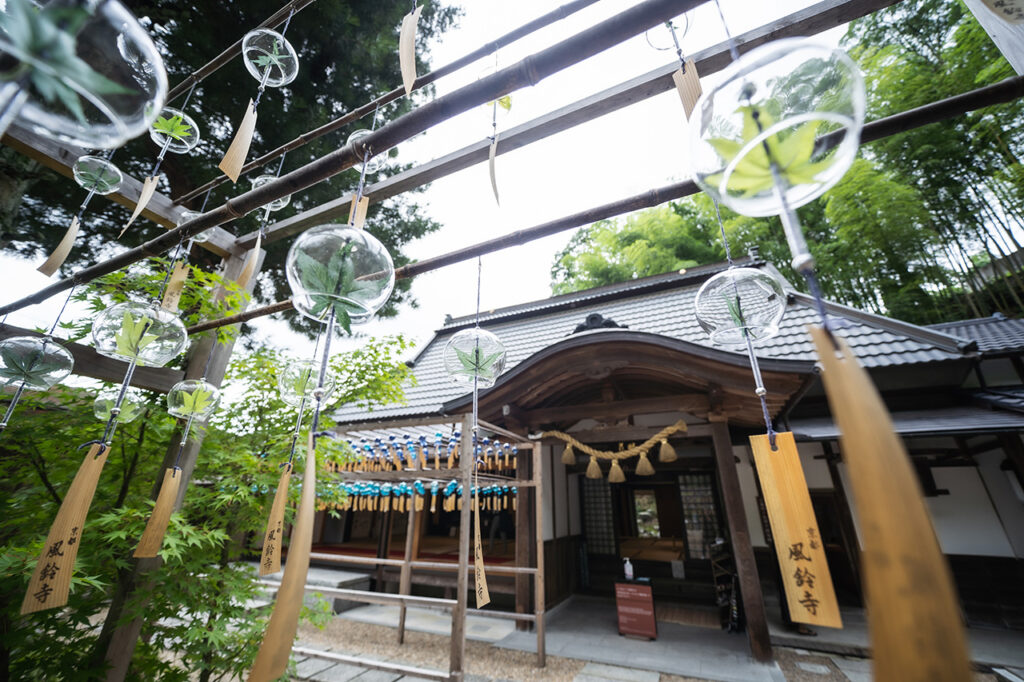

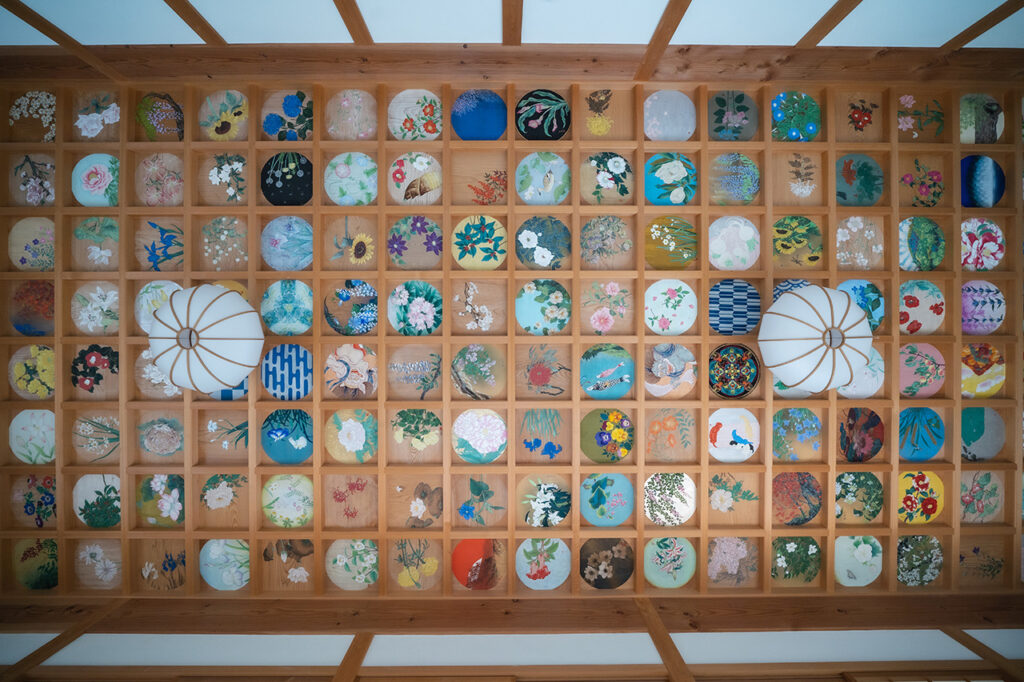
Colorful reflections of flowers and Japanese landscapes

The ceiling painting was completed over a six-year period and opened to the public in 2017.
Inome windows in the Kyakuden allow visitors to see colorful seasonal scenes cut out of the building: cherry blossoms in spring, fresh greenery in summer, autumn leaves in fall, and snowy landscapes in winter. Inome, which resembles a heart shape, is a traditional Japanese pattern and is meant to ward off misfortune and invite good fortune.
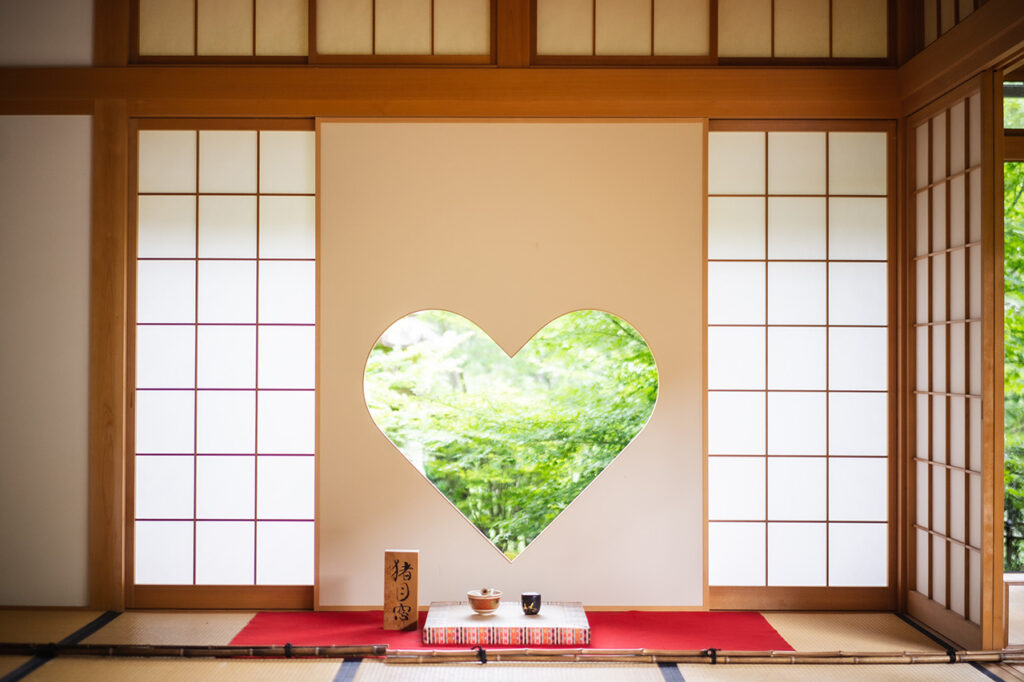

During the Fu-ring Festival, approximately 2,000 wind chimes play cool sounds in the precincts of the temple. The Hana Fu-ring Lane, where colorful Edo-style wind chimes and wind chimes with motifs of seasonal flowers such as sunflowers line the street, is especially worth seeing. This year, the festival will be held from June 1 to September 30.
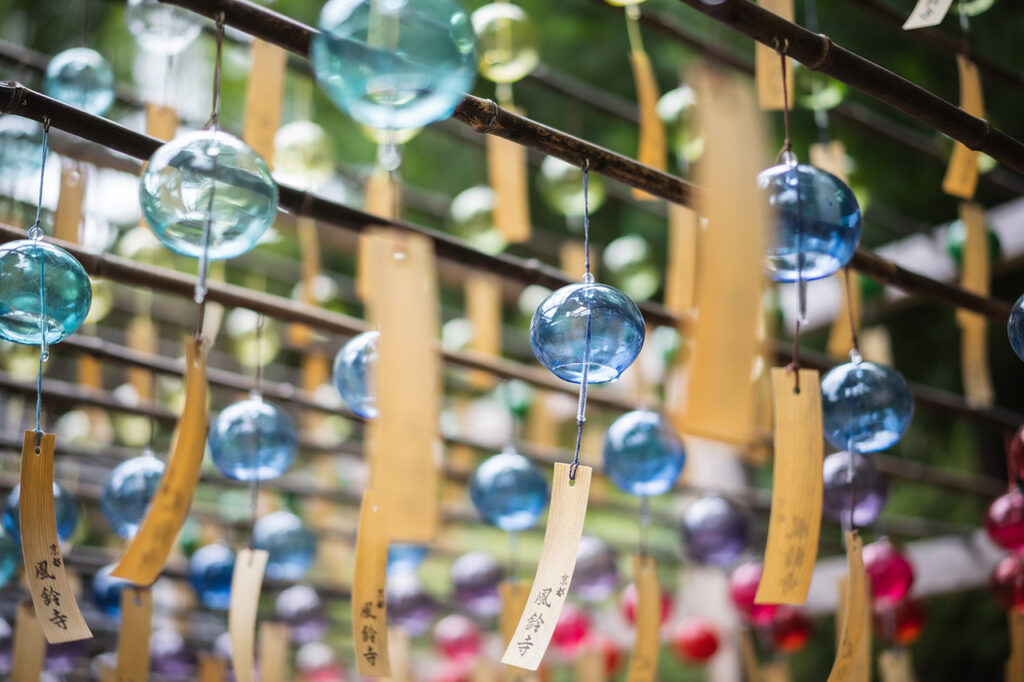

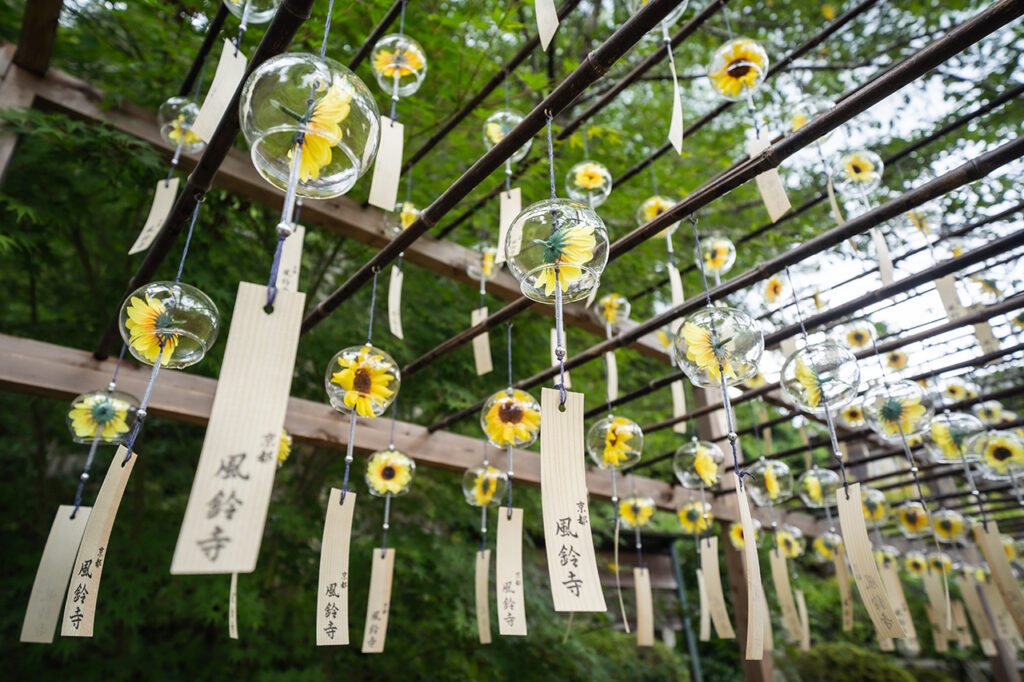

A ceiling painting completed in 1755 remains in the inner sanctuary of the main hall. Although soot from the monthly goma (firewood burning) makes it difficult to see, it depicts a mandala of seed characters. During the Fu-ring Festival, local wind-bells from 47 prefectures are displayed and visitors can ring them freely.
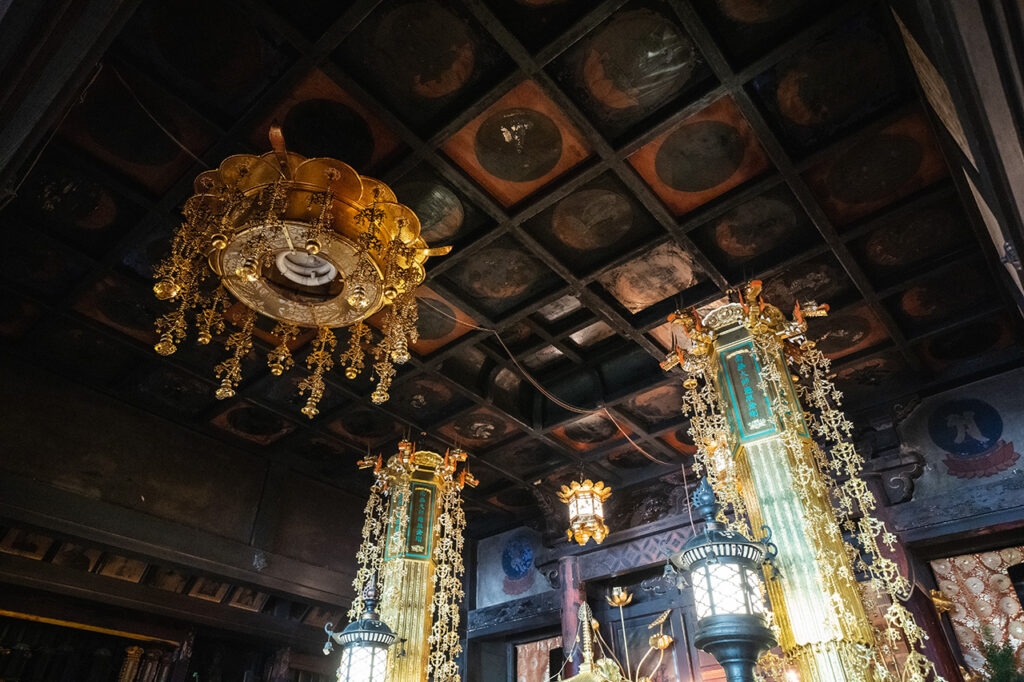

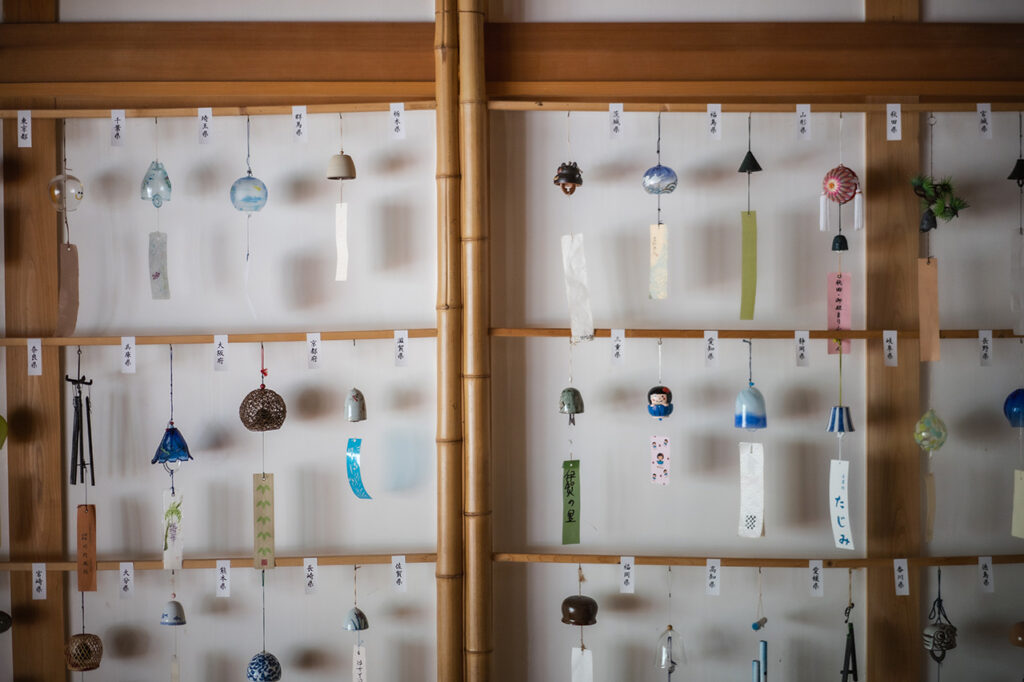

Seven to eight types of red seals are available, starting at 300 yen. There are red seals featuring the main deity, Fudo Myoo, and other enshrined Buddhas, seasonal paintings that change monthly, and the Inome window. Many of the red seals are accompanied by atmospheric paintings, which will bring a smile to your face.
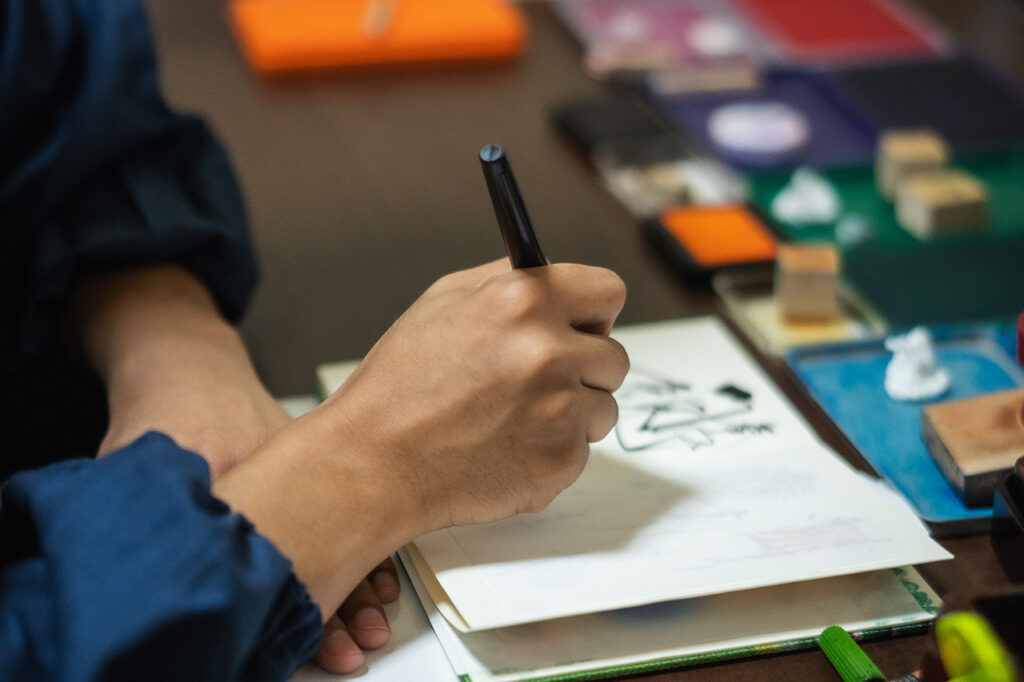

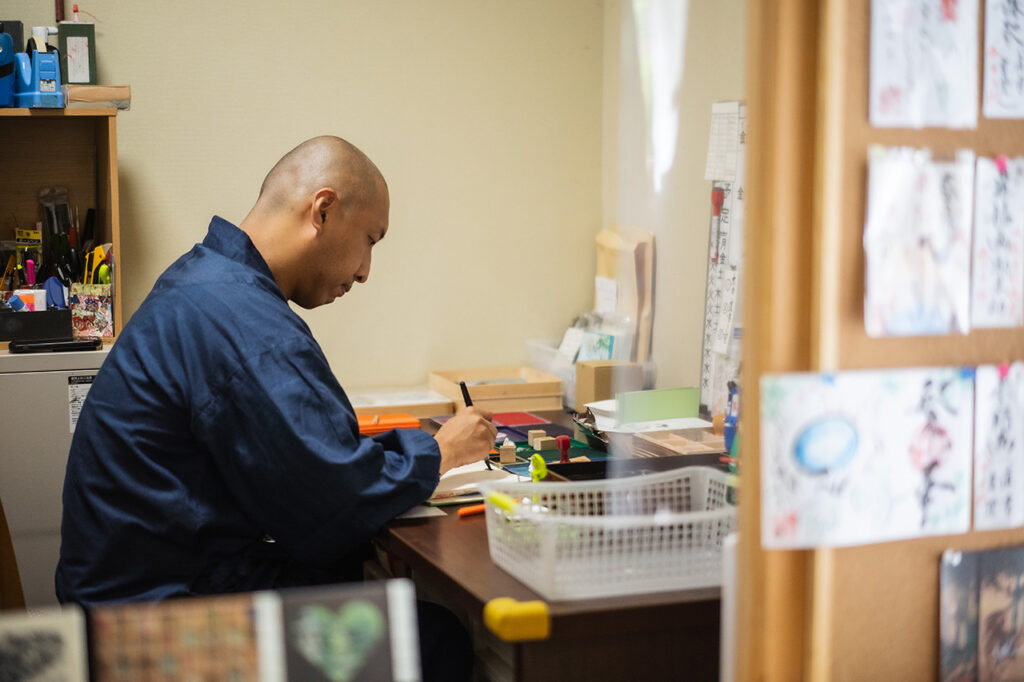

Over 600 interviews per year! An order site carefully selected by the editors who knows Kyoto and Shiga.
nowOfficial LINE friend registration500 yen OFF coupon is being issued!
Distributed every Friday morning at 8:00 am! From new restaurant information to event information that we want to share with you, We deliver articles about Kyoto that are useful to know. About 20,000 people have registered.Click here to add a friend!
 News
News Feature article
Feature article Featured event
Featured event